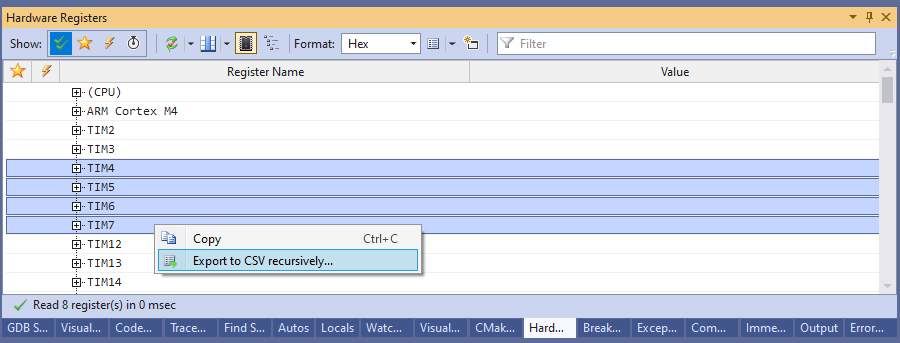Forum Replies Created
-
AuthorPosts
-
support
KeymasterHi,
We have not recreated the tutorial because there have not been any major changes to the ESP-ADF workflow. We had added a note in step 4 here explaining how to find out the toolchain version compatible with ESP-ADF and a separate section here, explaining how ESP-ADF and ESP-IDF work together.
The compatibility between specific versions of ESP-ADF, ESP-IDF, the toolchains and Python is up to Espressif. All we do is briefly retest the stable ESP-IDF releases with the corresponding toolchains, and release them as ready-to-install packages. ESP-ADF has considerably fewer users than ESP-IDF, so we do not retest it that often, sorry.
If you are running into strange problems with ESP-ADF and Python, we would suggest troubleshooting it as follows:
- Reset your Python environment as described here.
- Find out the exact versions of ESP-IDF, ESP-ADF and the toolchain you want to use (per Espressif documentation).
- Install the corresponding toolchain via VisualGDB Package Manager.
- Install ESP-ADF into that toolchain as shown here.
If it still doesn’t work, you could be still using incompatible versions of Espressif packages. We would advise first getting it to work outside VisualGDB, then taking note of the exact versions that actually work, and double-checking that VisualGDB is using the same versions. You can always export the build command used by VisualGDB to a batch file as shown here, and experiment with it (e.g. patch it to use a different Python environment, or a different ESP-IDF version).
As far as our support goes, we can help you find VisualGDB settings that control specific parts of the build (e.g. which ESP-ADF version is used by a specific project), but it’s up to you to find a working combination of parts provided by Espressif.
support
KeymasterHi,
Thanks for confirming your support status. Please try this build: VisualGDB-6.0.4.5081.msi
support
KeymasterHi,
VisualGDB handles the bracket and quote pairing independently from Visual Studio, and did not implement the tabout behavior (typing ‘)’ or ‘”‘ would successfully skip over a matching auto-inserted bracket though).
That said, it looks like a useful feature, so we have added it to this build: VisualGDB-6.0.4.5081.msi
You can enable it via Tools->Options->Text Editor->C/C++(VisualGDB)->Advanced->Typing Assist->Tab out of brackets (enabled by default).
support
KeymasterHi,
This syntax comes from gdb itself. You can read more about it here: https://sourceware.org/gdb/current/onlinedocs/gdb.html/Arrays.html
support
KeymasterHi,
This looks like the behavior of the old VisualGDB version that could not reliably distinguish the load/placement addresses of some sections, and had to guess it. Please try updating to the latest VisualGDB 6.0 Beta 3 – it should handle it out-of-the-box.
support
KeymasterHi,
We have built ARM64 versions of the critical platform-specific VisualGDB components (e.g. VisualGDBNativeARM64.dll, libssh2-arm64.dll), so they will work at full speed.
As for the external tools, we will have to wait until the ARM64 support in MinGW becomes mainstream and stable enough, and we see enough users interested in ARM64 builds. Until then, the normal x86 builds will work just fine through the emulator. If you don’t want to wait, you are always welcome to build the tools on your side and replace the VisualGDB-provided binaries – these are open-source tools built with open-source MinGW, so you don’t need any special parts from us to do it.
support
KeymasterHi,
Sorry, we have not encountered anything similar. Please feel free to post on the Raspberry Pi or Qt forums – maybe you can get some pointers there.
support
KeymasterHi,
No problem, you can turn it off by clicking the CodeJumps button (tag icon) in the upper right corner of the text editor.
support
KeymasterHi,
Sorry, it is hard to suggest anything specific without knowing what exactly you have changed. Please try reproducing the problem from scratch and sharing the relevant screenshots that can help us reproduce it on our side. Please also make sure you are using the latest VisualGDB 6.0 Beta 3 and have renewed your support.
support
KeymasterHi,
This looks like an issue between a particular ST-Link and the target. It could be caused by wiring, broken target, or something else. You can try getting it working with STM32CubeIDE first. If it works there and doesn’t work with VisualGDB, we can help you compare the OpenOCD command lines and get it working as well.
support
KeymasterHi,
It is fully supported starting from the 6.0.4 builds (e.g. VisualGDB-6.0.4.5075.msi). We have tested it on the latest Apple M3 Max and it works just fine (that said, getting drivers for some JTAG programmers to work could be tricky).
support
KeymasterHi,
Sure, feel free to reach out to our sales, and we will give you a quote.
support
KeymasterYou can try contacting the device vendor, or your supplier. Maybe, they could have some suggestions.
As far as VisualGDB is concerned, it runs OpenOCD in order to handle the low-level debug functionality. The STM32 support in OpenOCD is developed by ST and generally works very well with genuine ST devices. If it’s not working with a particular device, the issue is somewhere between OpenOCD and that specific device. If you can get OpenOCD working via command line, we can help you configure VisualGDB to use that command line when you start a debug session. If not, it won’t work with VisualGDB either.
support
KeymasterHi,
The ST-Link devices are specifically designed to work with ST microcontrollers only, so it makes sense that they wouldn’t work with APM32. You can try contacting the device vendor- maybe they supply their own version of ST-Link or OpenOCD.
support
KeymasterHi,
No problem, please try this build: VisualGDB-6.0.4.5073.msi
We have added a context menu command for saving the selected register values (including all subregisters):

The CSV file created with this commands contains 3 columns: the register name, raw hex value (regardless of the actual register size) and the formatted value according to the current settings.
Attachments:
You must be logged in to view attached files. -
AuthorPosts